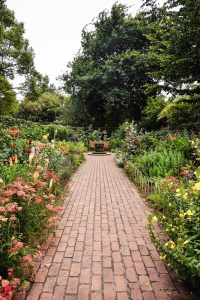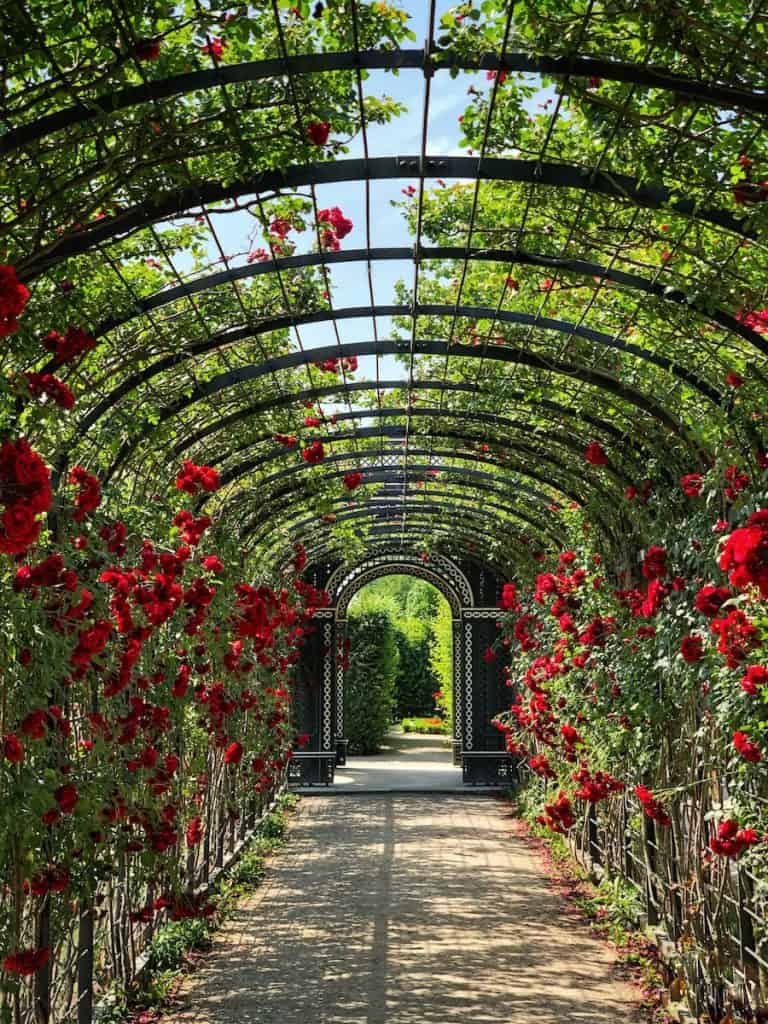English country gardening is a style that celebrates the natural beauty of the countryside with a cottage garden feel, its rich mix of colors, textures, and scents. It is a gardening tradition steeped in romance, history and a love for the environment. With its lush, cottage garden style plantings, rambling roses, and meandering pathways, English gardens are a haven for both people and wildlife.
This essay will explore the history and key elements of the English garden style, followed by a discussion of the plants, techniques, and design principles that define this timeless style.
History of English Country Gardening
The origins of English country gardening date back to the medieval period when monastic gardens were created for both practical and spiritual purposes. These gardens featured a mix of vegetables, herbs, and flowers, as well as features such as hedgerows and pathways that formed the basis for later garden designs. The style evolved further during the Tudor and Elizabethan periods, with gardens becoming more ornamental and including features such as knot gardens, topiary, and espaliered fruit trees.
The English country garden, as we know it today, emerged during the 18th and 19th centuries as a reaction against the formal, geometric gardens of the time. Landscape architects and garden designers such as Lancelot “Capability” Brown and Humphry Repton began to create gardens that were designed to blend with the surrounding countryside, incorporating naturalistic features such as lakes, follies, and sweeping lawns.
The Arts and Crafts movement of the late 19th and early 20th centuries saw a revival in traditional crafts and a renewed interest in the beauty of the natural world. This movement had a significant influence on English country gardening, with designers such as Gertrude Jekyll and Edwin Lutyens creating gardens that emphasized the beauty of native plants, informal planting schemes, and the use of local materials.
Key Elements of English Country Gardening

An English country garden is characterized by its informal, romantic atmosphere, its use of traditional materials, and its emphasis on native plants and wildlife. Key elements of this style include:
1. Informal planting schemes: An English country garden typically features a mix of perennials, annuals, bulbs, and shrubs, arranged in a naturalistic, informal fashion. Plants are chosen for their color, form, and scent, and are often allowed to self-seed and spread, creating a sense of spontaneity and abundance.
2. Use of native plants: A key feature of English flower garden is the use of plants that are native to the British Isles. These plants are well-suited to the local climate and soil conditions, and provide important habitats for native wildlife. Examples of native plants that are commonly used in English country gardens include foxgloves, hollyhocks, and lavender.
3. Wildlife-friendly features: English country gardens often include features such as ponds, bird baths, and log piles, which provide habitats for a wide range of wildlife, including birds, insects, and amphibians. These features not only create a sense of harmony with the natural world but also help to support biodiversity.
4. Traditional materials: The use of traditional, local materials is an important aspect of English country garden design. Examples include the use of dry stone walls, wattle fencing, and reclaimed bricks and tiles for pathways and edging.
5. Structural elements: An English country garden often features a range of structural elements that provide both form and function. These may include pergolas, arbors, and archways, which create a sense of enclosure and provide support for climbing plants, as well as features such as potting sheds and greenhouses, which are both practical and aesthetically pleasing.
Plants for an English Country Garden
Just like English cottage garden, a wide range of plants can be used in English garden ideas, with an emphasis on those that provide color, scent, and texture. Some popular choices include:
1. Roses: Roses are a quintessential feature of an English style garden, particularly old-fashioned varieties such as David Austin roses, which are known for their beautiful blooms and strong fragrance. Rose gardens can be used in a variety of ways, including climbing up walls and pergolas, or as shrub roses in mixed borders.
2. Perennials: Perennials form the backbone of an English country garden, providing color and interest throughout the year. Popular choices include delphiniums, peonies, and lupins, which can be combined with other plants such as lavender, catmint, and salvia to create a tapestry of colors and textures.
3. Bulbs: Spring-flowering bulbs such as daffodils, tulips, and bluebells are an essential part of an English country garden, creating a burst of color after the winter months. Summer-flowering bulbs such as alliums and lilies can also be used to add height and drama to borders.
4. Annuals: Annuals such as cosmos, poppies, and sweet peas can be used to fill gaps in borders and provide a constant supply of cut flowers throughout the summer months.
5. Shrubs: Shrubs such as hydrangeas, lilacs, and viburnums provide structure and interest in an English country garden, as well as providing valuable habitats for wildlife.
Design Principles and Techniques
When designing an English country garden, there are several key principles and techniques to consider:
1. Curving lines: English country gardens are characterized by their soft, curving lines, which create a sense of movement and fluidity. Paths, borders, and lawns should be gently curved, rather than straight or angular, to help create a naturalistic, informal traditional English garden feel.
2. Layered planting: To create the characteristic abundance and richness of an English country garden, plants should be layered, with taller plants at the back of borders, and shorter plants at the front. This creates a sense of depth and variety, as well as providing multiple levels of interest.
3. Repetition: Repeating certain plants, colors, or textures throughout the garden can help to create a sense of unity and harmony. This can be achieved by using the same plants in different areas or by incorporating a particular color or texture into various elements of the garden.
4. Focal points: English country gardens often feature focal points such as statues, urns, or benches, which draw the eye and provide a sense of structure and balance. These features should be carefully positioned and integrated into the overall garden design, rather than being treated as standalone elements.
5. Enclosure: One of the key elements of an English country garden is a sense of enclosure and privacy. This can be achieved through the use of hedges, walls, or fencing, as well as by positioning plants and structures in such a way that they create a sense of seclusion and intimacy.
English Country Gardening – Final Thoughts
English country gardening is a timeless style that celebrates the beauty and diversity of the natural world. With its informal planting schemes, wildlife-friendly features, and use of traditional materials, this style of gardening is both practical and aesthetically pleasing, providing a haven for both people and wildlife.
By understanding the history, key elements, and design principles of English country gardening, it is possible to create your own garden that is not only beautiful but also environmentally responsible and sustainable. From the romance of rambling roses, flowering plants and the scent of lavender, to the magic of a wildlife pond and the serenity of a secluded seating area, an English country garden is a place where the wonders of nature can be appreciated and enjoyed, year after year.


